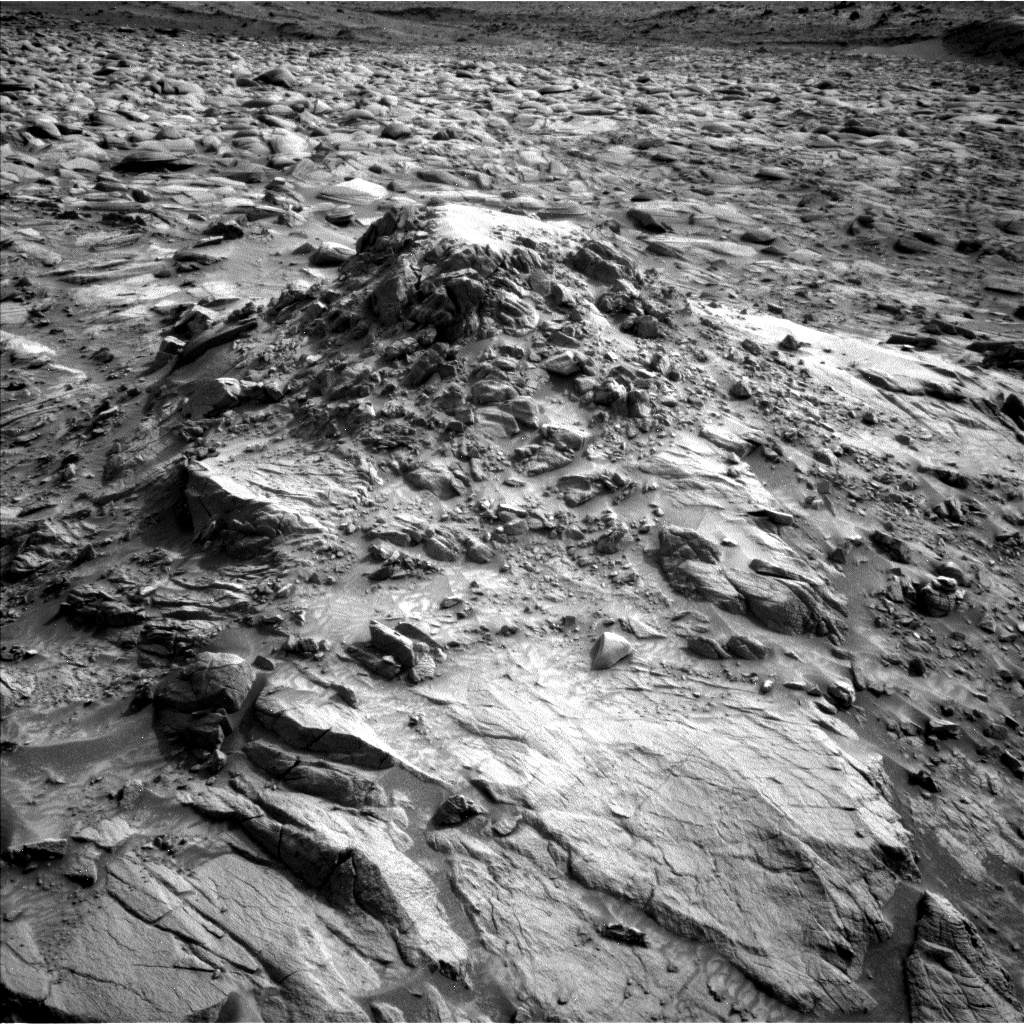Earth planning date: Friday, March 29, 2024
Curiosity is approaching an intriguing pile of rocks called “Hinman Col” – a poorly sorted collection of clasts located along the margin of Gediz Vallis ridge. We’re hoping to get closer to this deposit over the weekend, to set up for contact science on the different rock types next week. In doing so, we hope to investigate where the different clasts might have come from and how this feature (which looks like a bit of a mess!) relates to the rest of Gediz Vallis ridge.
Today’s 3-sol plan is focused on contact science on the bedrock in our workspace, remote sensing to understand our surroundings, and a short bump to prepare for contact science at Hinman Col next week. Before we get to Hinman Col, we have another opportunity to assess the light-toned, laminated bedrock in our workspace. The science team planned 3 contact science targets, including DRT, MAHLI, and APXS on the target “Rose Lake” to assess the chemistry and textures in typical bedrock. We also planned a MAHLI stereo mosaic on “Whorl Mountain” to model the rock surface and study bedding orientations around some disrupted laminations, and another MAHLI/APXS target called “Little Slide Canyon” to investigate the texture and composition of the more convoluted bedding.
The geology theme group also planned ChemCam LIBS on two bedrock targets, “Robinson Lake” and “Ward Mountain,” to characterize rougher and smoother parts of the local bedrock. ChemCam will also be used to acquire long distance RMI mosaics to assess parts of upper Gediz Vallis Ridge at the location known as “Fascination Turret.” Meanwhile Mastcam will be busy documenting the ChemCam targets and acquiring mosaics to assess layering and clast configuration in the vertical face of “Fascination Turret.”
Then Curiosity will take a very short drive to get into just the right position in front of Hinman Col, hopefully with a variety of rocks in the workspace. After the drive we’ll take some post-drive imaging to prepare for future targeting. The third sol includes an untargeted science block, so the team planned an AEGIS activity to add to the bedrock survey of compositional variations. Throughout the plan, the Environmental theme group planned a lot of great monitoring activities to search for dust devils and clouds, assess atmospheric opacity, and monitor the movement of fines on the rover deck.
Looking forward to learning more about this messy pile of rocks and unraveling the clues that they might record about their emplacement!
Written by Lauren Edgar, Planetary Geologist at USGS Astrogeology Science Center
































